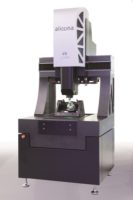Alluxa, Inc. developed specialty optical filters used aboard the Perseverance Rover, which landed safely on Mars on February 18, 2021. Alluxa’s special notch filter is optimized for high performance over a wide angle range in order to provide in-band light to the Scanning Habitable Environments with Raman & Luminescence for Organics and Chemicals (SHERLOC) imager.
Alluxa’s filters help enable non-contact detection and characterization of organics and minerals on Mar’s surface. Developed in conjunction with NASA’s Jet Propulsion Lab in Pasadena, CA, the SHERLOC instrument, part of the Perseverance payload, is a Deep UV (DUV) resonance Raman and fluorescence spectrometer that will scan for past life on Mars and help identify rock samples for possible return to Earth.
SHERLOC operates at the end of rover’s robotic arm, using two distinct detection modes that include two types of UV light spectroscopy, plus a versatile camera. According to Luther Beegle, principal scientist and investigator at NASA Jet Propulsion Laboratory, “It can detect an important class of carbon molecules with high sensitivity, and it also identifies minerals that provide information about ancient aqueous environments.”
Mike Scobey, chief executive officer at Alluxa, notes, “All of us at Alluxa are delighted to have worked hand-in-hand with JPL to develop a specialized notch filter with ultra high transmission, which will aid in groundbreaking discoveries on Mars via the Perseverance Rover’s SHERLOC imager. We are proud to have been part of this historic mission.”
For more information on the SHERLOC context imager, visit https://mars.nasa.gov/news/sherloc-to-micro-map-mars-minerals-and-carbon-rings/.
For more on the fluorescence spectrometer, visit https://mars.nasa.gov/mars2020/spacecraft/instruments/sherloc/for-scientists/.
More also can be found at www.alluxa.com.







